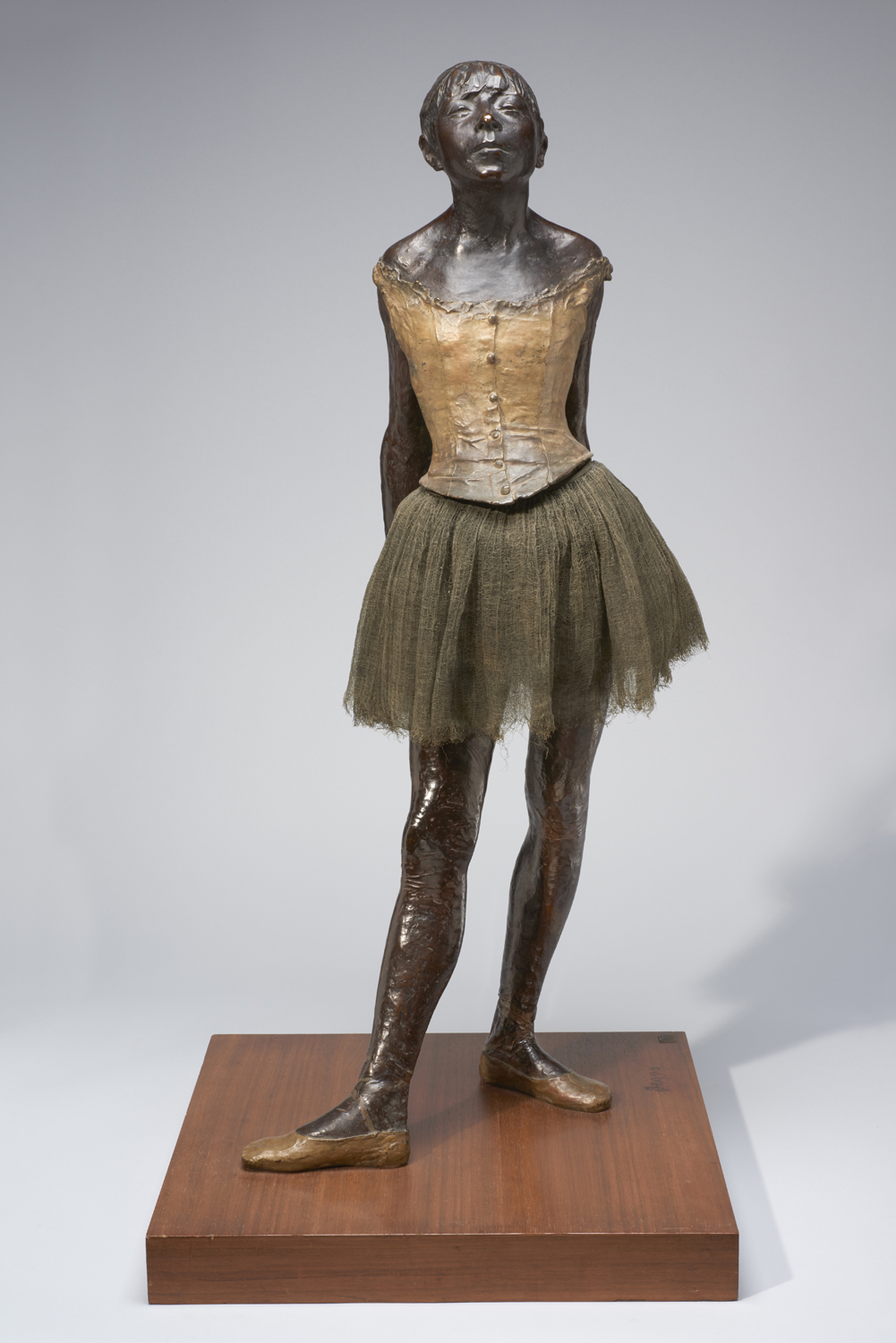Little Dancer, Aged Fourteen
Modeled 1878–81; cast after 1936
Edgar Degas (French, 1834-1917)
Painted bronze with cotton and silk on a wooden base
Norton Simon Art Foundation
The original wax model of “The Little Fourteen Year Old Dancer” was exhibited in the sixth Impressionist Exhibition of April 1881, presenting the Parisian public with an extraordinary new conception of sculpture. Degas dressed the wax figure in a silk bodice, gauze tutu, and fabric slippers, with a satin ribbon in her real hair wig. The wig, slippers, and bodice were covered with a layer of wax to help unite them with the rest of the work, while preserving their special texture. His model, Marie von Goethem, was a student of the Ballet de l’Opera and worked as an artist’s model. Accustomed to representations that idealized human forms, the public had mixed reactions to the graphic portrayal of an adolescent dance student, dressed in real clothing. After the exhibition, Degas returned the “Little Dancer” to his apartment, where it remained until his death in 1917.
Beyond the Pale: The Radical Realism of Degas’s Little Dancer
In March 2018, Chief Curator Emily Talbot gave a talk on the controversial 19th-century reception of this now-beloved sculpture. The lecture, delivered in conjunction with Talbot’s exhibition Taking Shape: Degas as Sculptor (2017–18), considers Degas’s mixed-media practice in the context of other artists whose works challenged the conventions of classical sculpture. Degas’s material experimentation placed him simultaneously in the historical tradition wax-based preparatory modeling and the uncanny world of wax as it was used for medical or scientific simulacra in the 19th century.
